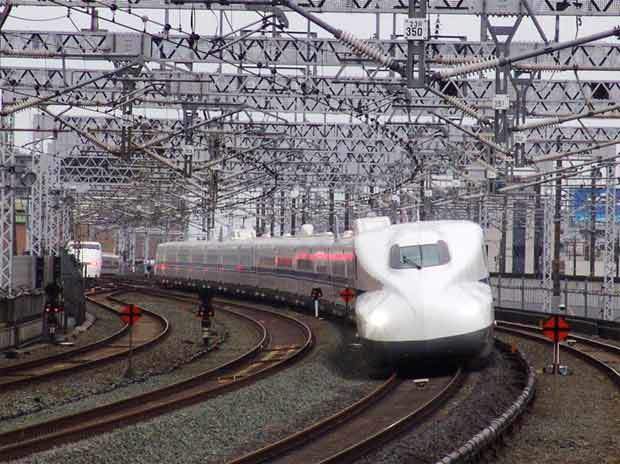
Dallas and Houston could soon be connected by Bullet Train
Dallas and Houston Could Soon Be Connected by High Tech Bullet Train.
Amtrak is considering using the N700S Series Shinkansen, also known as the bullet train, to connect Dallas and Houston because it is one of the fastest and most advanced high-speed trains in the world. The N700S can travel up to 285 kilometers per hour (177 miles per hour), which would reduce the travel time between Dallas and Houston to just 90 minutes. This would be a major improvement over the current Amtrak trains that operate between the two cities, which can take up to 5 hours to complete the trip.
The use of the N700S would also be a major boost for the economies of Dallas and Houston. The high-speed rail line would make it easier for businesses to operate in both cities, as they would be able to transport goods and people more quickly and efficiently. The high-speed rail line would also make it easier for people to travel between the two cities for work, leisure, and education. This would boost tourism and economic activity in both cities.
Osmotics SkinCare™ Osmotics SkinCare™ is a Global Anti-Aging Beauty Brand.
However, there are also some challenges that need to be addressed before the Dallas-Houston high-speed rail line can become a reality. One challenge is the cost of the project. The N700S is a very expensive train, and the cost of building the high-speed rail line would also be significant. Another challenge is the environmental impact of the project. The high-speed rail line would require the construction of new tracks, which could have a negative impact on the environment.
Despite these challenges, Amtrak is optimistic that the Dallas-Houston high-speed rail line will eventually become a reality. The company believes that the project would be a major economic boon for both cities, and it would also make it easier for people to travel between the two cities.
Dallas and Houston Could Soon Be Connected by N700S Series Shinkansen

- It is the latest version of the Shinkansen bullet train, which has been in operation in Japan since 1964.
- It is designed to be more energy-efficient and environmentally friendly than previous Shinkansen models.
- It has a number of new features, including a tilting mechanism that allows it to safely navigate curves at high speeds, and a new braking system that reduces wear and tear on the tracks.
- The N700S is also equipped with a variety of amenities for passengers, including Wi-Fi, power outlets, and dining cars.

Here are some of the key features of the N700S Series Shinkansen:
- Tilting mechanism: The N700S has a tilting mechanism that allows it to safely navigate curves at high speeds. This is done by using hydraulic actuators to tilt the cars up to 1.5 degrees to the side. This helps to keep the train stable and prevents it from swaying during curves.
- New braking system: The N700S has a new braking system that reduces wear and tear on the tracks. This is done by using a regenerative braking system that converts the kinetic energy of the train into electricity, which is then stored in the train’s batteries. This electricity can then be used to power the train’s auxiliary systems, such as the air conditioning and lighting.
- Energy-efficient design: The N700S is designed to be more energy-efficient than previous Shinkansen models. This is done by using a number of features, such as a lightweight body, aerodynamic design, and energy-saving lighting.
- Amenities: The N700S is equipped with a variety of amenities for passengers, including Wi-Fi, power outlets, and dining cars. The dining cars offer a variety of Japanese and Western dishes, as well as alcoholic beverages.
The N700S Series Shinkansen is a state-of-the-art high-speed train that offers a number of advantages over previous Shinkansen models. It is more energy-efficient, environmentally friendly, and has a number of new features that make it safer and more comfortable for passengers. If Amtrak is able to use the N700S to connect Dallas and Houston, it would be a major boost for the economies of both cities and make it easier for people to travel between them.
The World’s First Hydrogen-Powered Train line in Germany





